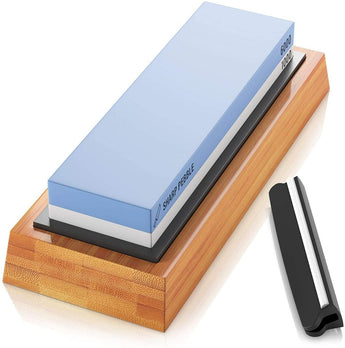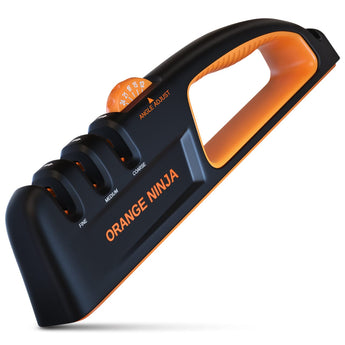
A dull knife is never a joy to work with. At best the dullness will make your task cumbersome and at worse a dull blade puts you at a risk of a severe injury. Not just that; a decent knife will cost you a pretty penny and if you keep persisting with a dull blade you could cause irreversible damage to it.
Although you could choose to take your knives to a professional sharpener we recommend that you learn how to sharpen your blades yourself. Not only will it save you some cash but there’s a certain satisfaction that comes along with sharpening your own blades.
Within this article, we’ll be discussing how to find the correct angle for sharpening.
Factors That Dictate The Sharpening Angle:
There are several factors that will dictate the angle you choose to sharpen your knife.
- The degree of sharpness vs. edge robustness: The first factor that you have to consider is whether you want a super sharp hair splitting knife or an edge that lasts longer. Every time you sharpen a knife you will essentially be removing some metal from the edge. Sharpening at a lower angle means you’ll have a sharper knife but more metal removal and a higher angle means less metal removal thus you end up with a thicker edge which means it’ll hold up longer.
- Primary Use: Another factor that determines the sharpening angle is the usual use you put your knife through. For instance, if you use your knife primarily for carving, filleting or chopping or does it come in contact with hard objects more often.
Key Sharpening Angles:
Although there are several sharpening angles, we’ll discuss 3 basic sharpening angles that will cover most knives for usual use
10 to 17 Degrees: If you use your knife mainly for filleting, slicing or cutting soft items then this is suitable. Although it will give you a much sharper edge it will also be quite weak. You do not want to use it for chopping and dicing.
17 to 22 Degrees: You will find that most Chef’s knives (the usual kitchen knife) can be sharpened between 17-22 degrees range. You can consider this range the sharpening “sweet spot” as it gives you the best of both sharpness and edge strength. This should give you the sharpness to get most of your kitchen jobs done.
22 to 30 Degrees: This range is meant for knives that are supposed to take a constant beating and regularly come into contact with hard objects. A hunting knife is a perfect candidate for this sharpening range.
We’d love to hear from you! Drop us a PM on our Facebook or Instagram. For more useful tidbits on knife-care be sure to visit our blog.



